 W
WThe AIFV is a US tracked light armored vehicle that serves as an infantry fighting vehicle (IFV) in the armies of several countries. It is a development of the M113A1 armored personnel carrier.
 W
WThe FV603 Saracen is a six-wheeled armoured personnel carrier built by Alvis and used by the British Army. It became a recognisable vehicle as a result of its part in the policing of Northern Ireland as well as for its role in the South African government's enforcement of apartheid. It is still in use in secondary roles in some countries.
 W
WThe AVGP, later known as the LAV I, is a series of three armoured fighting vehicles ordered by the Canadian military in the 1970s. The vehicles, named Grizzly, Cougar and Husky respectively, were based on the six-wheeled version of the Swiss MOWAG Piranha I, and became the first generation Light Armoured Vehicle produced by General Dynamics Land Systems - Canada.
 W
WThe BMD-3 is an infantry fighting vehicle (IFV) originating from the former Soviet Union. This armored fighting vehicle is one of the lightest in its class and is intended to be a fire support platform for use by airborne and air assault units. The primary armament is a 30 mm 2A42 autocannon capable of firing different types of ammunition which include high-explosive and armor-piecing. The BMD-3 possesses multiple secondary weapons such as the 9M113 Konkurs missile and the AGS-17 grenade launcher to defeat a wide range of targets from enemy infantry to other armored fighting vehicles.
 W
WThe Bobcat was an armored personnel carrier (APC) designed and built in Canada in the 1950s and early 1960s. A lengthy development period and changing requirements drove the price up while not improving the basic design, and the project was eventually cancelled in late 1963 in favor of purchasing the ubiquitous M113.
 W
WBTR (БТР), from Bronetransportyor/Bronetransporter, is any of a series of Soviet or post-Soviet military armoured personnel carriers.
 W
WThe BTR-40 is a Soviet non-amphibious, wheeled armoured personnel carrier and reconnaissance vehicle. It is often referred to as the Sorokovka in Soviet service. It is also the first mass-produced Soviet APC. It was eventually replaced in the APC role by the BTR-152 and in the scout car role by the BRDM-1.
 W
WThe BTR-50 is a Soviet amphibious armored personnel carrier (APC) based on the PT-76 light tank. The BTR-50 is tracked, unlike most in the BTR series, which are wheeled. The BTR-50 shares many similarities with two other APCs, the OT-62 TOPAS and the Type 77. While the OT-62 is an improved copy of the BTR-50 developed jointly by Czechoslovakia and Poland, the Type 77, based on the Type 63 amphibious light tank developed by the People's Republic of China (PRC), is not a copy of the BTR-50.
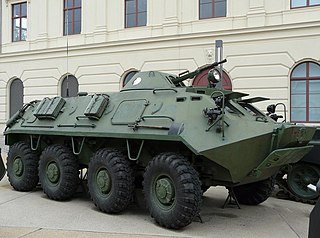 W
WThe BTR-60 is the first vehicle in a series of Soviet eight-wheeled armoured personnel carriers (APCs). It was developed in the late 1950s as a replacement for the BTR-152 and was seen in public for the first time in 1961. BTR stands for Bronetransporter.
 W
WThe BTR-70 is an eight-wheeled armored personnel carrier originally developed by the Soviet Union during the late 1960s under the manufacturing code GAZ-4905. On August 21, 1972, it was accepted into Soviet service and would later be widely exported. Large quantities were also produced under license in Romania as the TAB-77.
 W
WThe BTR-152 is a six-wheeled Soviet armored personnel carrier, built on the chassis and drive train of a ZIS-151 utility truck. It entered service with a number of Warsaw Pact member states beginning in 1950, and formed the mainstay of Soviet motor rifle battalions until the advent of the amphibious BTR-60 series during the 1960s.
 W
WThe BTR-D is a Soviet airborne multi-purpose tracked armoured personnel carrier which was introduced in 1974 and first seen by the West in 1979 during the Soviet–Afghan War. BTR-D stands for Bronetransportyor Desanta. It is based on the BMD-1 airborne IFV. NATO gave it the designation BMD M1979.
 W
WThe Buffel is a MRAP infantry mobility vehicle used by the South African Defence Force during the South African Border War. The Buffel was also used as an armoured fighting vehicle and proved itself in this role. It replaced the older Bedford RL-based Hippo APC and itself was replaced by the Mamba from 1995 in South Africa, but remains in use elsewhere, notably Sri Lanka.
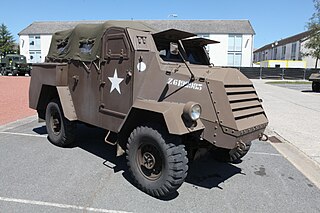 W
WThe C15TA Armoured Truck was an armoured load carrier produced by Canada during the Second World War. It was developed from the Otter Light Reconnaissance Car.
 W
WThe EE-11 Urutu is a Brazilian amphibious armored personnel carrier. It was based on the drive train and chassis components of the EE-9 Cascavel armored car and initially emerged as part of a project to develop an amphibious troop-carrying counterpart to that vehicle for the Brazilian Army and Marine Corps (CFN). The first pre-production models entered service with the CFN in 1973 and serial production commenced the following year. While the CFN declined to adopt the EE-11 Urutu in large numbers, the Brazilian Army was more forthcoming and purchased 223; these entered service in 1975.
 W
WThe FV432 is the armoured personnel carrier variant in the British Army's FV430 series of armoured fighting vehicles. Since its introduction in the 1960s, it has been the most common variant, being used for transporting infantry on the battlefield. At its peak in the 1980s, almost 2,500 vehicles were in use.
 W
WThe Hippo is a South African armoured personnel carrier. Specially designed to be mine resistant, it can carry ten infantrymen and a crew of two. The vehicle's remote-operated turret mounts dual 7.62mm machine guns, but like other improvised fighting vehicles, it is only lightly protected against ballistic threats.
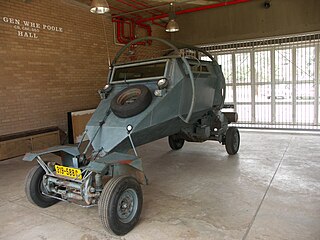 W
WThe Leopard Security Vehicle is an unusual land-mine protected APC used by the Rhodesian Government and civilian population during the 1964-1979 Rhodesian Bush War. It offered basic but necessary protection against mine attack through the use of a V-hull.
 W
WThe Lynx reconnaissance vehicle is a United States-built tracked reconnaissance armoured fighting vehicle, which was employed by the armed forces of the Netherlands and Canada. Dutch vehicles were exported in the 1990s to Bahrain and Chile, according to SIPRI 35 and 8 vehicles respectively.
 W
WThe M39 Armored Utility Vehicle (T41) was an American armored vehicle designed during the Second World War, which saw service in that conflict and in the Korean War. Like a number of vehicles of this type, it was built using an existing chassis, that of the M18 Hellcat.
 W
WThe M59 was an American armored personnel carrier that entered service in the spring of 1954 replacing the M75. It had three key advantages over the M75: it was amphibious, had a lower profile, and was considerably cheaper to produce. Production ended in 1960, by which time approximately 6,300 had been built. The M84 Mortar Carrier was a derivative of the M59. The M59 was replaced in service by the M113 family of vehicles.
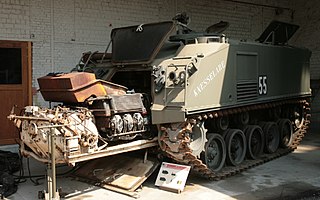 W
WThe M75 Armored Infantry Vehicle is an American armored personnel carrier that was produced between December 1952 and February 1954, and saw service in the Korean War. It was replaced in U.S. service by the smaller, cheaper, amphibious M59. The M75s were given as military aid to Belgium, where they were used until the early 1980s. 1,729 M75s were built before production was halted.
 W
WThe M113 is a fully tracked armored personnel carrier (APC) that was developed and produced by the Food Machinery and Chemical Corporation (FMC). The M113 was sent to United States Army Europe to replace the mechanized infantry's M59 APCs from 1961. The M113 was first used in combat in April 1962 after the United States provided the South Vietnamese Army (ARVN) with heavy weaponry such as the M113, under the Military Assistance Command, Vietnam (MACV) program. Eventually, the M113 was the most widely used armored vehicle of the U.S. Army in the Vietnam War and was used to break through heavy thickets in the midst of the jungle to attack and overrun enemy positions. It was largely known as an "APC" or an "ACAV" by the allied forces.
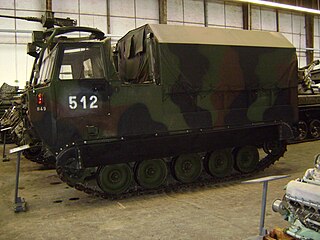 W
WThe M548 is a tracked cargo carrier. It is based on the M113 armored personnel carrier, and was built by FMC Corp. at its San Jose, California, and Charleston, WV facilities.
 W
WThe M114 Command and Reconnaissance Carrier is a Vietnam War-era tracked armored fighting vehicle, used by the United States Army. It was manufactured by the Cadillac Division of General Motors in the early 1960s. The M114 was designed to be fast and stealthy for use in the reconnaissance role.
 W
WThe Mine Protected Combat Vehicle – MPCV was a Rhodesian 4×4 Infantry fighting vehicle (IFV), first introduced in 1979 and based on the body of the Mercedes-Benz Unimog light truck. It remains in use with the Zimbabwe National Army.
 W
WThe MT-LB is a Soviet multi-purpose fully amphibious auxiliary armored tracked vehicle, which was introduced in the 1950s. It is also produced in Poland, where its YaMZ engine was replaced by a Polish version.
 W
WThe MT-LBu is a Soviet multi-purpose fully amphibious armoured carrier which was developed under the factory index Ob'yekt 10 in the late 1960s, based on the MT-LB. It has a more powerful engine, a 40 cm higher hull and a longer chassis with 7 road wheels on each side.
 W
WThe OT-62 TOPAS is a series of amphibious tracked armoured personnel carriers developed jointly by Polish People's Republic and Czechoslovakia (ČSSR). OT-62 stands for Obrněný Transportér vzor 62 – "armoured personnel carrier model 62". TOPAS stands for Transportér Obrněný Pásový – "tracked armoured personnel carrier".
 W
WThe OT-64 SKOT is an amphibious, armored personnel carrier (8x8), developed jointly by Poland (PRL) and Czechoslovakia (ČSSR) well into the 1960s.
 W
WThe Saurer 4K 4FA is an Austrian armoured personnel carrier with caterpillar tracks. It was later replaced by the Steyr 4K 7FA G 127. It went into production in 1961.
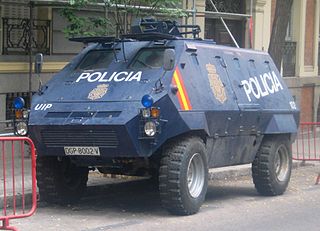 W
WThe Thyssen Henschel UR-416 is a German armoured personnel carrier, first introduced in 1969 and based on the body of the Mercedes-Benz Unimog light truck.
 W
WThe TPz (Transportpanzer) Fuchs ("fox") is a German armoured personnel carrier originally developed by Daimler-Benz but manufactured and further developed by the now Rheinmetall MAN Military Vehicles (RMMV). Fuchs was the second wheeled armoured vehicle to enter service with the Bundeswehr and it can be used for tasks including troop transport, engineer transport, bomb disposal, Nuclear, Biological and Chemical reconnaissance and electronic warfare. RMMV and its predecessors manufactured 1,236 Fuchs 1, mostly for the German Army.
 W
WThe Type 60 Armored Personnel Carrier is an armored personnel carrier that entered service with Japan Ground Self-Defense Force in 1960.
 W
WThe Type 63 is a Chinese armoured personnel carrier that entered service in the late 1960s. It was the first armoured vehicle designed in China without Soviet assistance. The design is simple and is comparable to other APCs of its time such as the M113.
 W
WThe Type 73 Armored Personnel Carrier is an armored personnel carrier that entered service with Japan Ground Self-Defense Force in 1973.
 W
WThe Norinco Type 77 is a Chinese amphibious armoured personnel carrier. First fielded in 1978, it is in many ways similar to the earlier Soviet BTR-50. However the two vehicles share little in their designs, as the Type 77 is based on the Type 63 light tank.
 W
WThe Unicorn is a MRAP used by the Sri Lankan military based on the Buffel, which is made by the Sri Lanka Electrical and Mechanical Engineers.